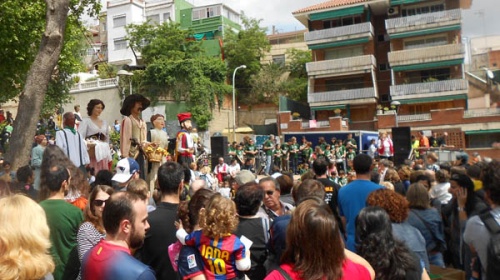Festa major del Guinardó
Activity dates
Dates de celebració
Mid-May in the Guinardó neighbourhood, Horta-Guinardó district
The Guinardó neighbourhood takes its name from the house which dominated the area in the 17th century. This building is currently the neighbourhood civic centre, the Casal d’Entitats, but the house has a long history full of stories. Until the 19th century the area was predominantly rural and full of arable fields. Little by little, single-storey houses with gardens were built. Like the majority of neighbourhoods in the district, the face of Guinardó was completely altered in the middle of the 20th century because of urban speculation and the construction of large blocks of flats.
The associations in the Guinardó neighbourhood have always been strong, and gained momentum in the 1970s. Their activity in the area can be seen in the organisation of the festa major, the main festival, which is a special commission for the neighbourhood's Coordinadora d’Entitats. There are a whole host of events aimed at all sections of the public, like sporting competitions, dances and concerts, as well as activities for older people and kids.
Origins
Originally the Guinardó festa major was held on 27th April, the feast day of Mare de Déu de Montserrat. But, for scheduling reasons and the progressive secularisation of society, it was moved to the weekend after 1st May.
Did you know...
Sabies que...
One of the capgrossos, the big-headed figures from Horta-Guinardó is dedicated to Antoni Roca, a local activist. It was made by Toni Mujal, an artist from Cardona, and was unveiled in the 1985 festa major.



